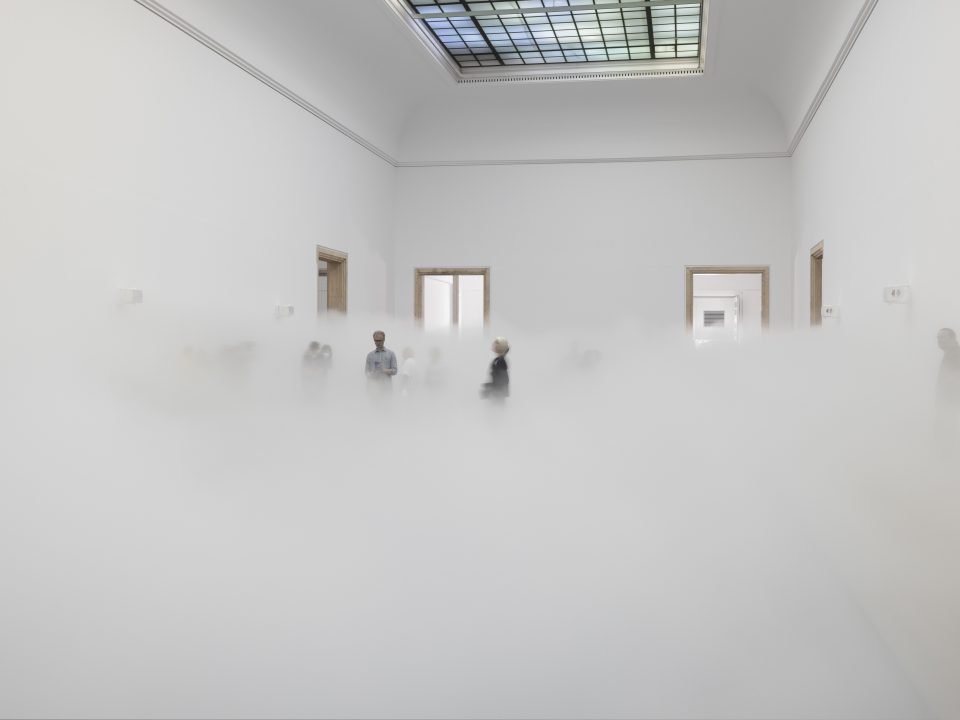“Fog makes visible things become invisible and invisible things – like wind – become visible”. Fujiko Nakaya
Fujiko Nakaya's fog sculptures are made entirely of water. They challenge traditional notions of sculpture as they change at every moment depending on temperature, wind and atmosphere.
“Fujiko Nakaya. Nebel Leben” is the first comprehensive survey exhibition of the visionary sculptor Fujiko Nakaya (b.1933, Sapporo, Japan) outside of Japan. Gaining prominence in the 1960s as a member of the New York-based collective Experiments in Arts and Technology (E.A.T.), she became internationally renowned for her immersive fog artworks, which defied traditional conventions of sculpture by generating temporary, borderless transformations that physically engage with the public and give shape to the surrounding environment. Driven by early ecological concerns, Nakaya’s work deals with water and air, mediums that have particular resonance in the face of the climate crisis. From the artist’s early paintings to her fog sculptures, single-channel videos, installations and documentation that reveal Nakaya’s cultural and social references, this experiential exhibition will offer an in-depth survey of one of Japan’s foremost artists.
The outside sculpture Munich Fog (Fogfall) #10865/II on the eastside of Haus der Kunst as well as Munich Fog (Wave), #10865/I are a new pieces created for Haus der Kunst; conceived of as a performance in which fog, the space, and the public participate. Nakaya introduces water as both a sculptural element and a metaphor for endless temporal processes to link material realities and media-generated illusions. Her cross-disciplinary approach also becomes evident in the titles of her fog works: the sequence of numbers designates the nearest weather station, whose data informs the preparatory planning of each work.
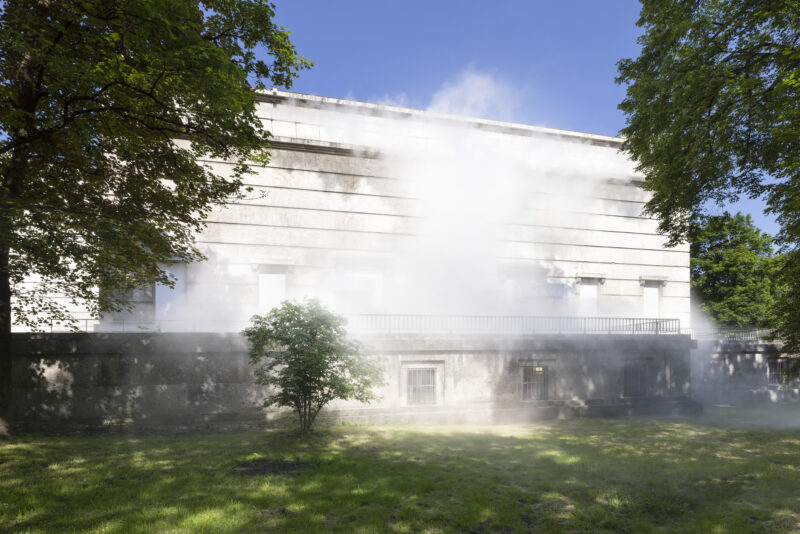
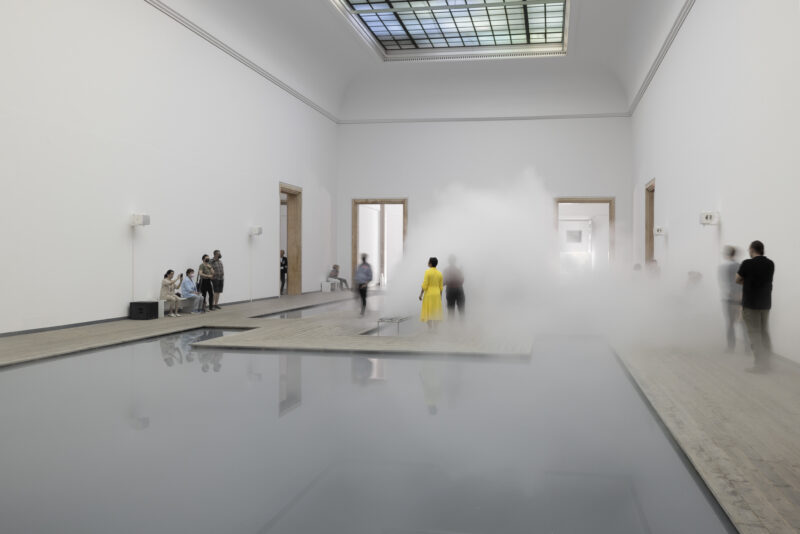
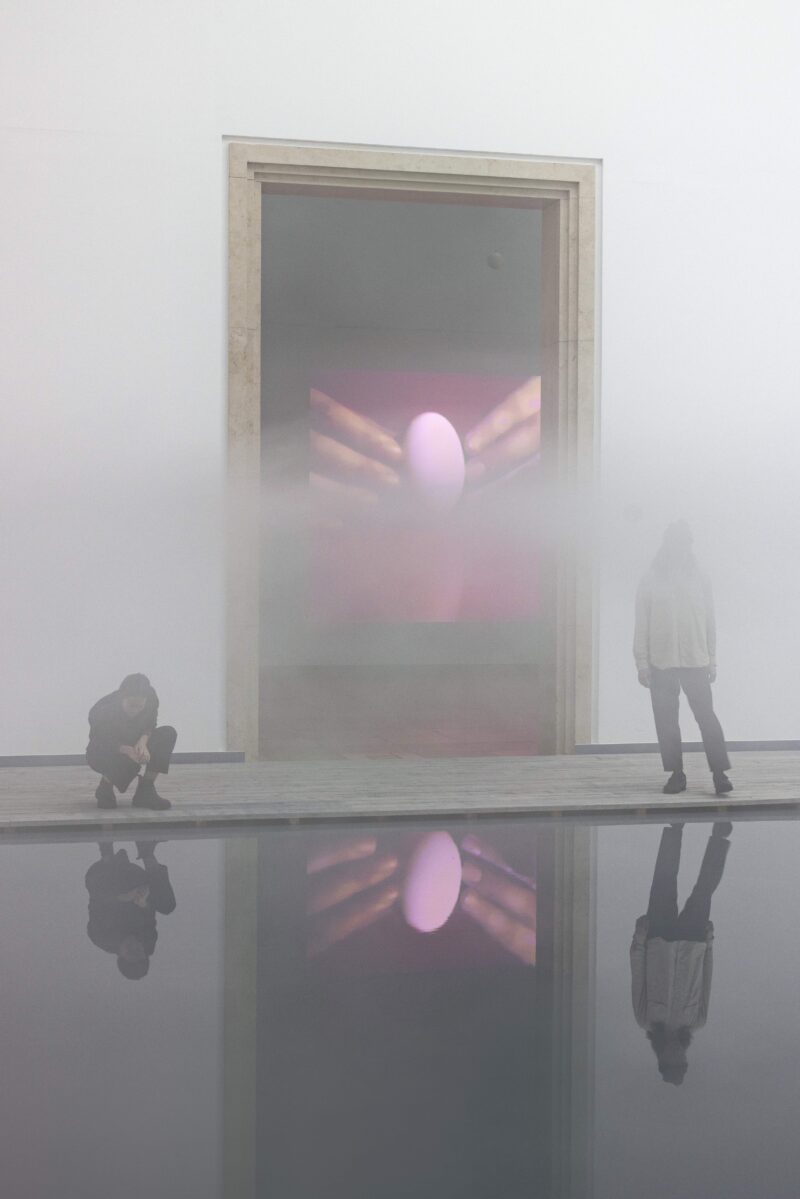
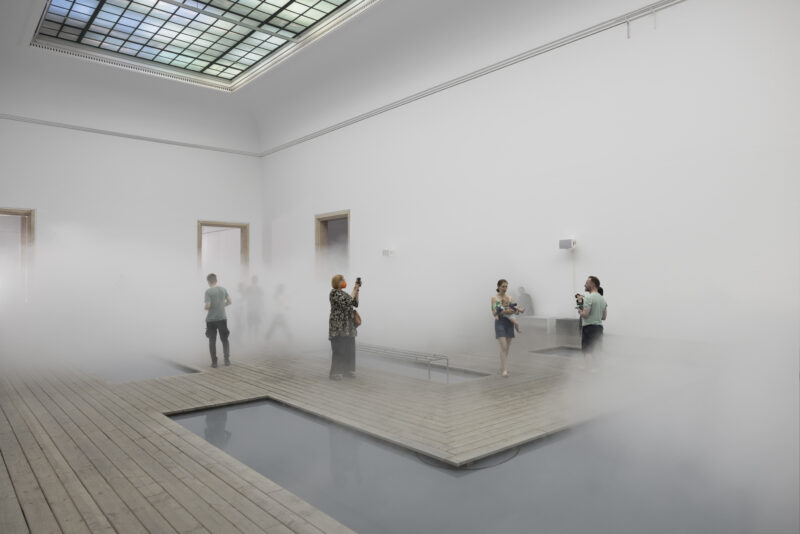
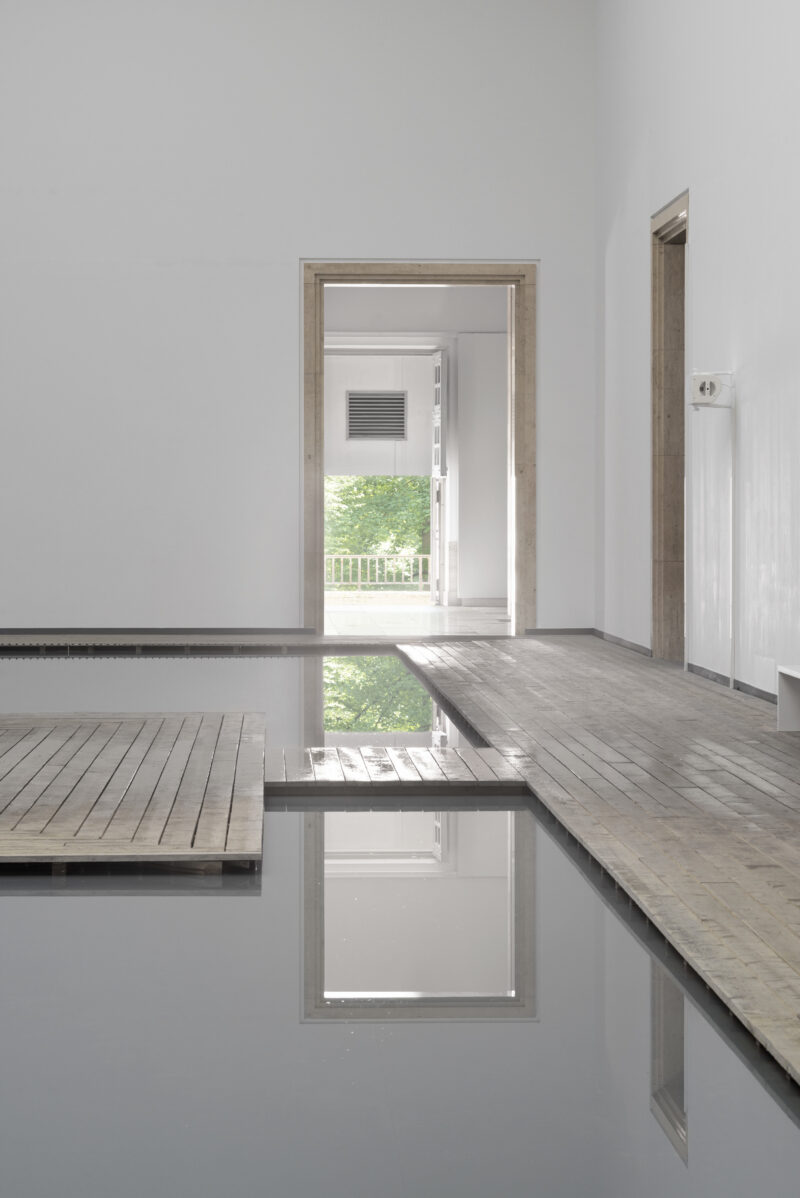
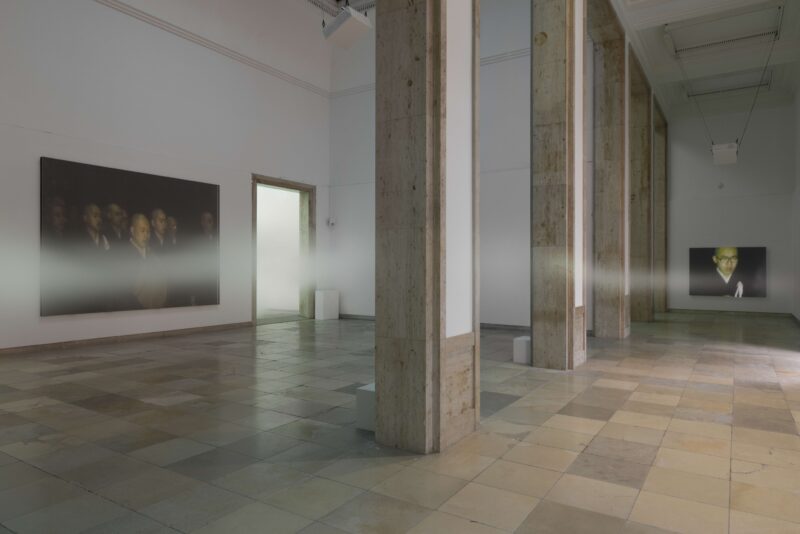
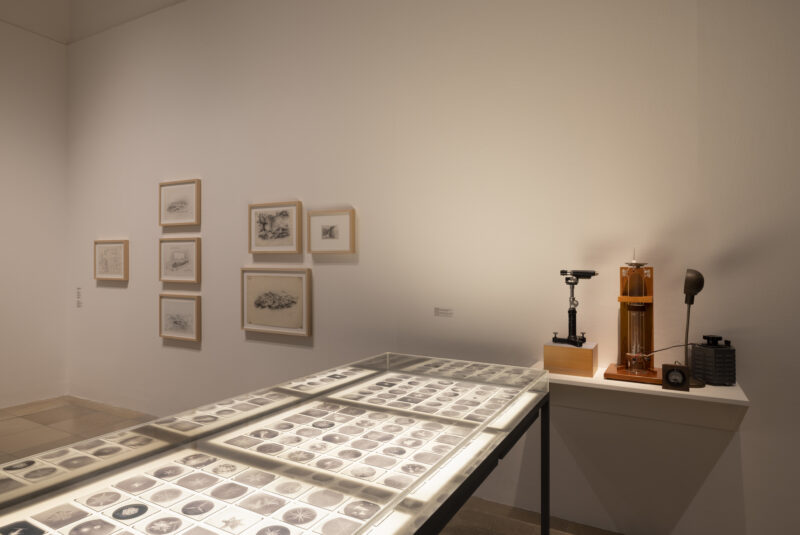
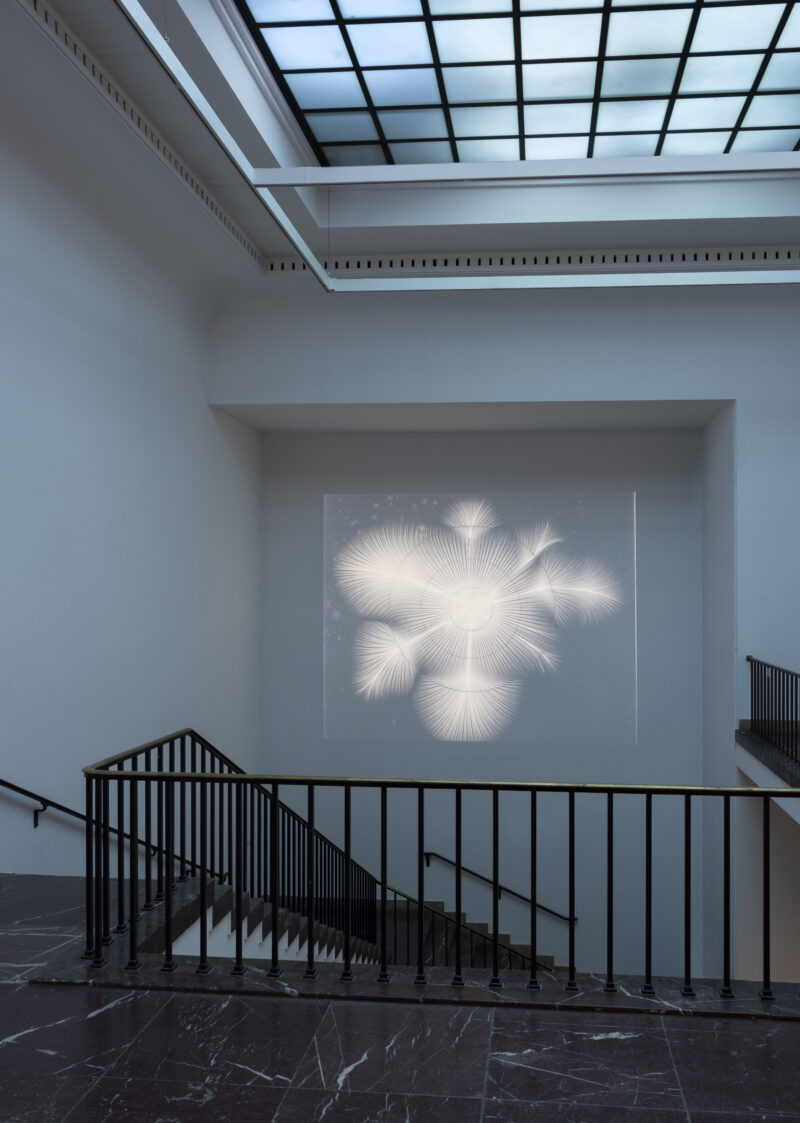
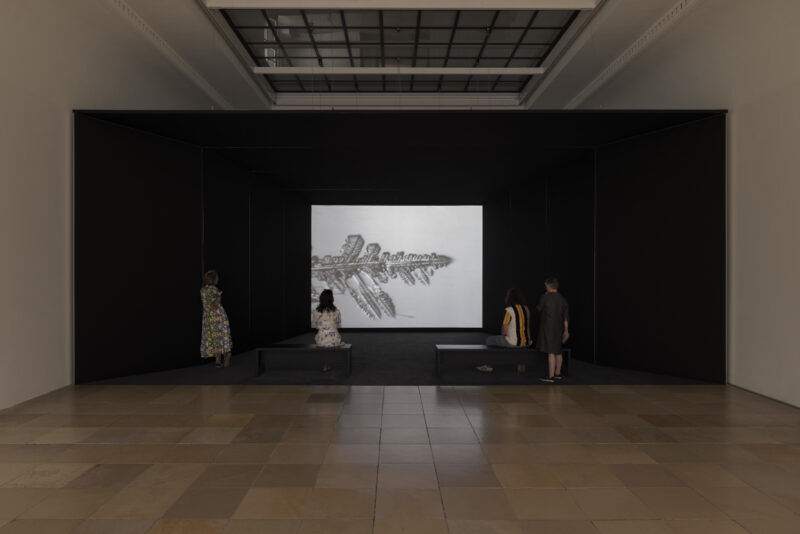
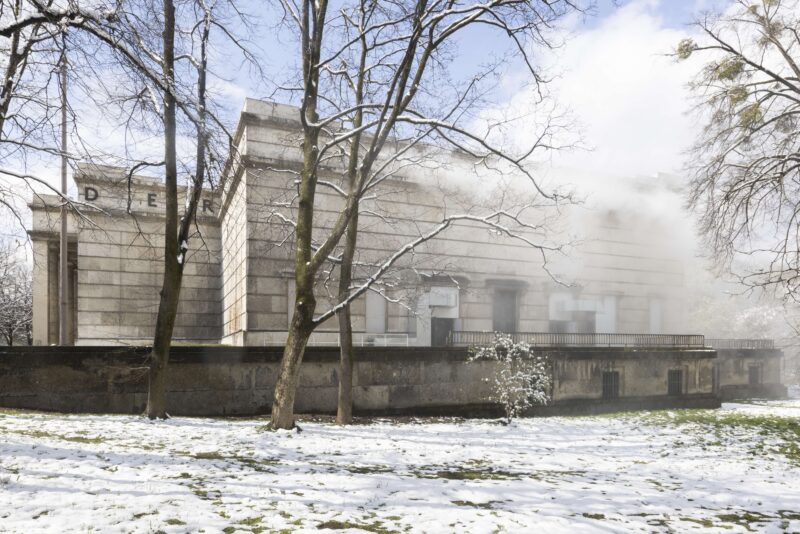
An entire room situates Nakaya’s work in a multiverse of historical events. It is dedicated to her early environmental awareness and the development of her work integrating aspects of both East Asian and Western art movements. The upstairs gallery delves into the contextualization of her work, showing a selection of educational science films from the Iwanami production company, founded by the artist's father, physicist Ukichiro Nakaya. Alongside the artist’s early paintings and sketches, the room features documents from his research that has significantly influenced Fujiko Nakaya’s approach to the world, its matter and its mediation. (For further information, see the digital guide)
Ukichiro Nakaya founded Nakaya Laboratory Productions in 1949. The following year, the science film studio was merged with the renowned and left-leaning publishing house Iwanami Shoten and was henceforth named Iwanami Productions. Employing new cinematographic and narrative techniques while focusing on the subjectivity of the portrayed, Iwanami developed its own style. Haden Guest, director of the Harvard Film Archives and curator of “Nebel Leben”, describes the style as “Japans Nouvelle Vague”. Iwanami Productions not only influenced Japan’s post-war film scene (particularly female filmmakers such as Noriaki Tsuchimoto and Susumu Hani); its work also impacted international documentary film. Haus der Kunst has digitized and subtitled some of the studio’s films for the exhibition:
- Susumu Hani, Children Who Draw / E o kaku kodomotachi (1956), 39 min.
- Sumiko Haneda, A Women’s College in the Village / Mura no fujin gakkyū (1957), 26 min.
- Toshie Tokieda, This is Tokyo (1961), 28 min.
- Noriaki Tsuchimoto, Tokyo / Tōkyō-to (1962), 29 min.
- Kazuo Kuroki, Gunma Prefecture / Gunma-ken (1962), 29 min.
At the “Iwanami Special Program”, this selection will be on view from 7—20.7. and 27—31.7. at the Auditorium of Haus der Kunst. Admission to this part of the exhibition is free.
Nakaya’s paintings and drawings are proof of a transformed way of seeing, informed by observation, which the artist describes as the underlying principle of both art and science. Akin to abstract landscapes, they trace the artist’s interest in cyclical processes of decay and renewal. The painted clouds and biomorphic forms constitute an essential link to Nakaya’s moving image practice and her fog sculptures.
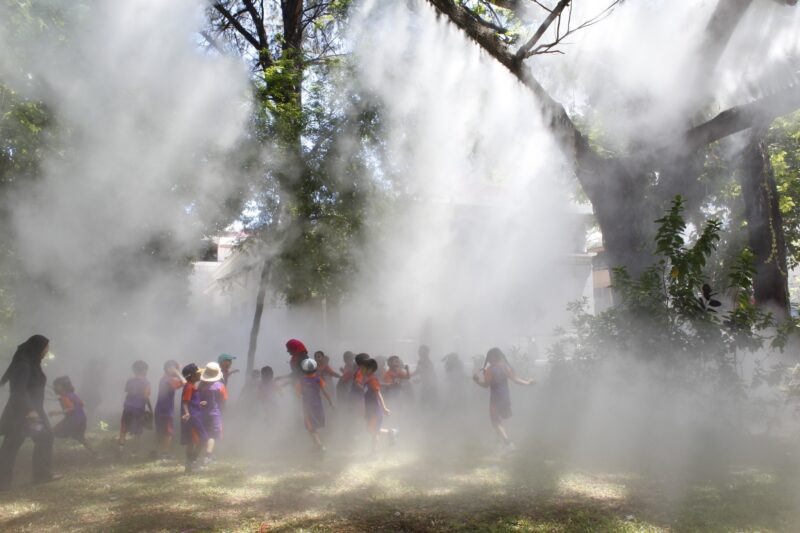
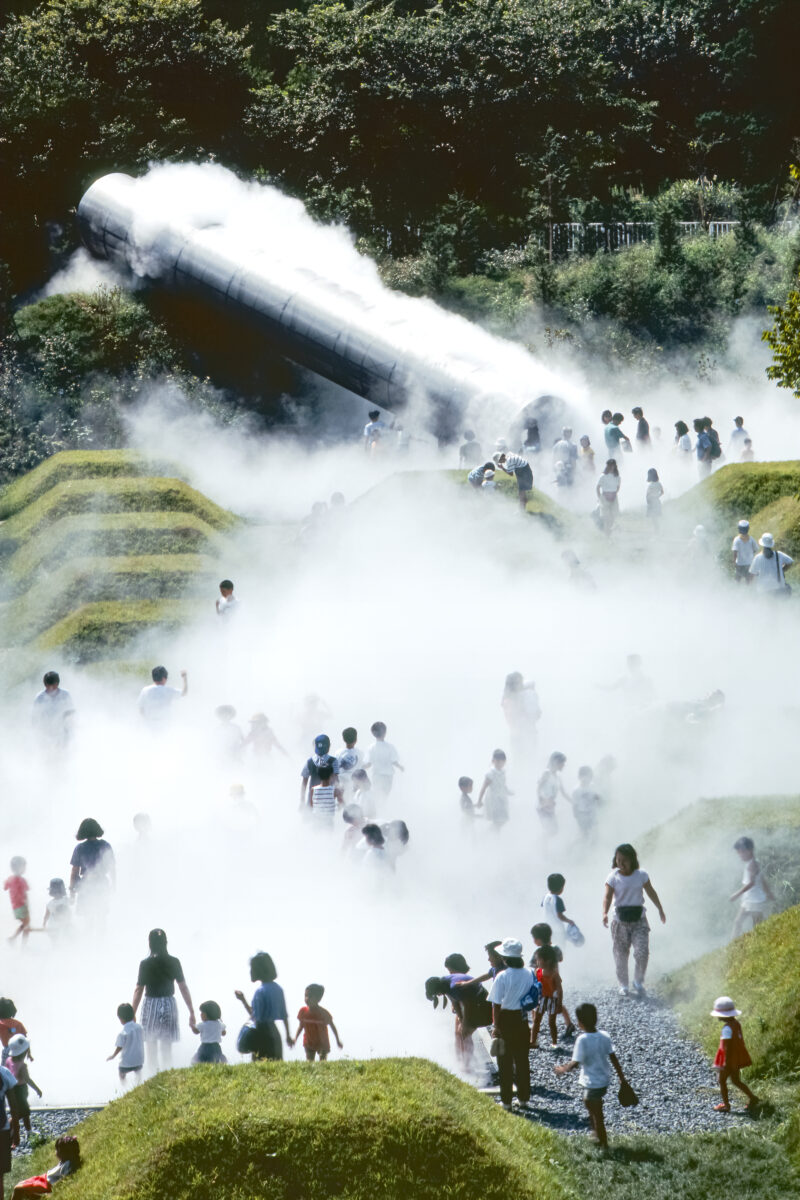
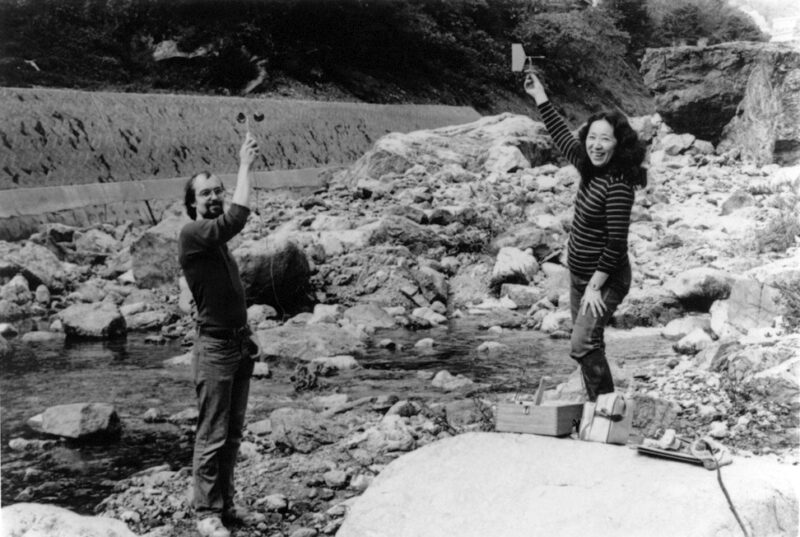
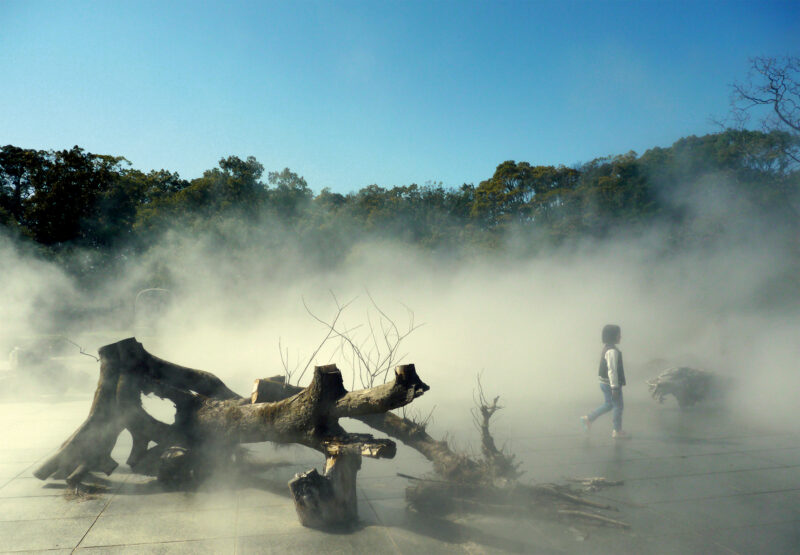
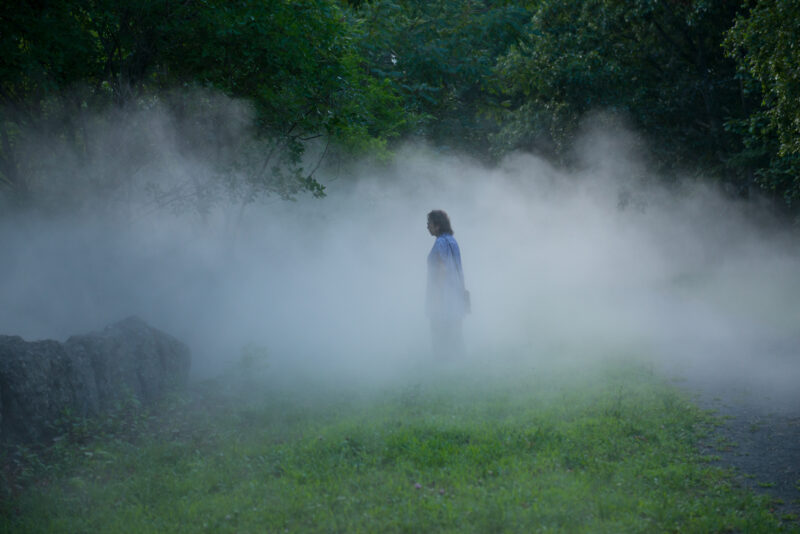
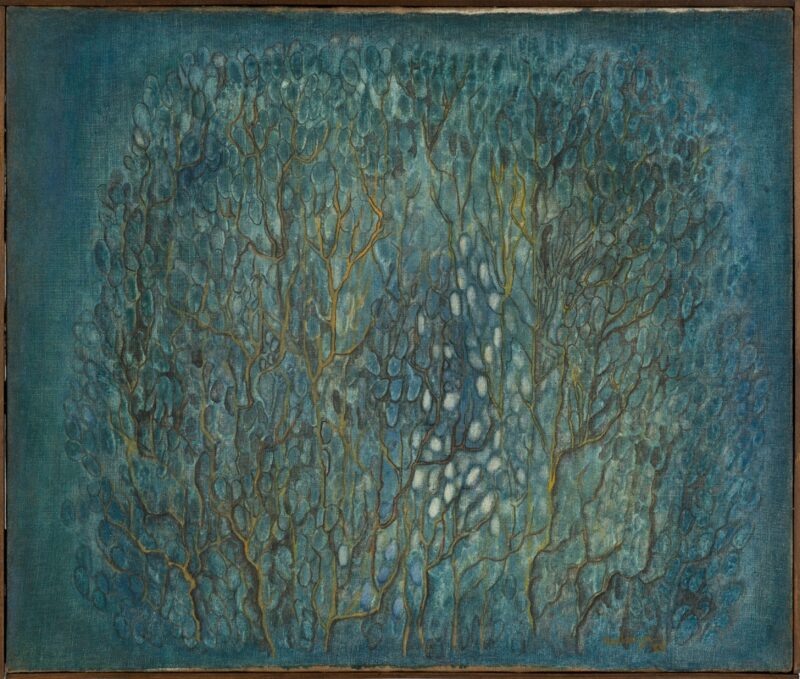
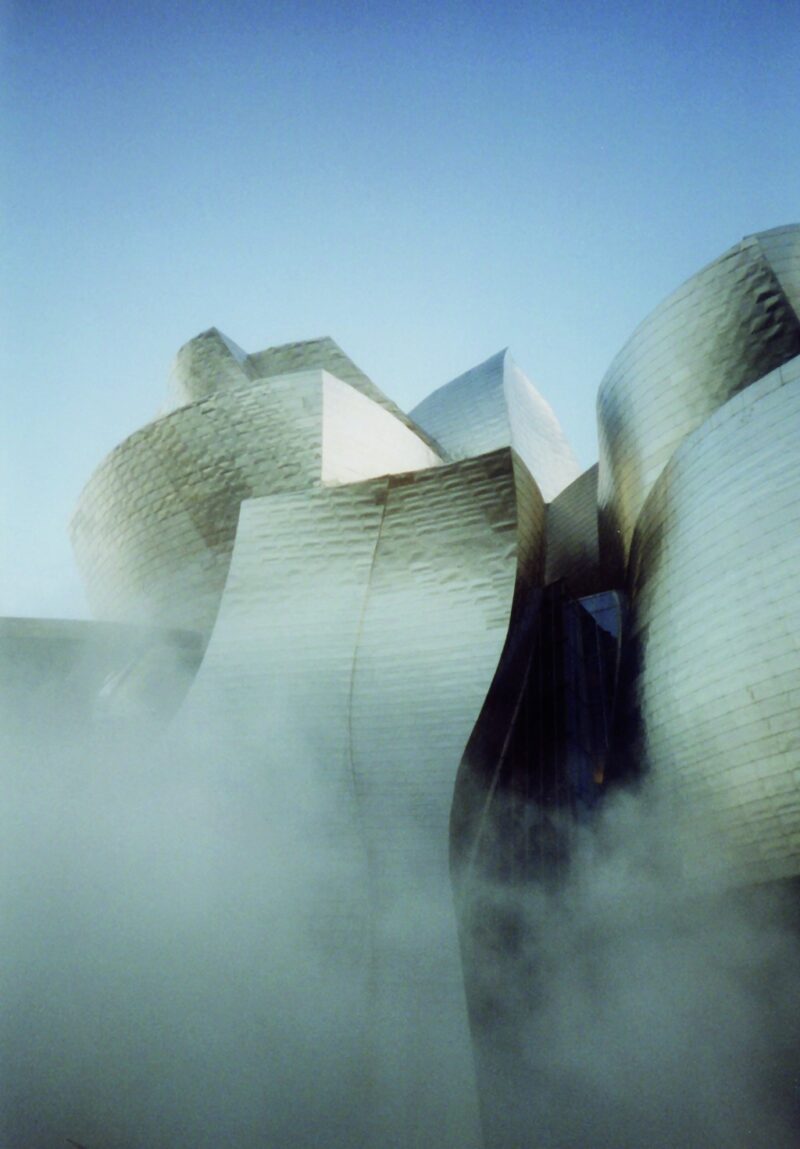
The detailed observation of natural phenomena and seemingly small, everyday gestures plays a central role in Fujiko Nakaya’s oeuvre. Her videos often feature real-time recording and resemble experiments which challenge the patterns of perception. Nakaya used video as a means of subjective analytical documentation and direct communication. In addition to her video sculptures and installations the artist engaged in so-called “communication projects” in which she interviewed and documented local communities. In 1980, she co-founded the artist collective Video Hiroba and opened SCAN, the first gallery for video in Japan. (For further information, see the digital guide.)
Fujiko Nakaya is a game-changing artist whose practice not only is driven by early ecological concerns, but also stands out from the acknowledged trajectories of both East Asian and Western sculpture. Her work resonates with the history of her country without being subsumed to the movements Gutai and Mono-Ha nor to the Euro-North American lineage of Anti-Form, Process Art and Post-Minimalism.
Blurring the borders of science, art, and technology, Fujiko Nakaya’s work invites us to rethink, by direct physical experience, human entanglement with the environment.
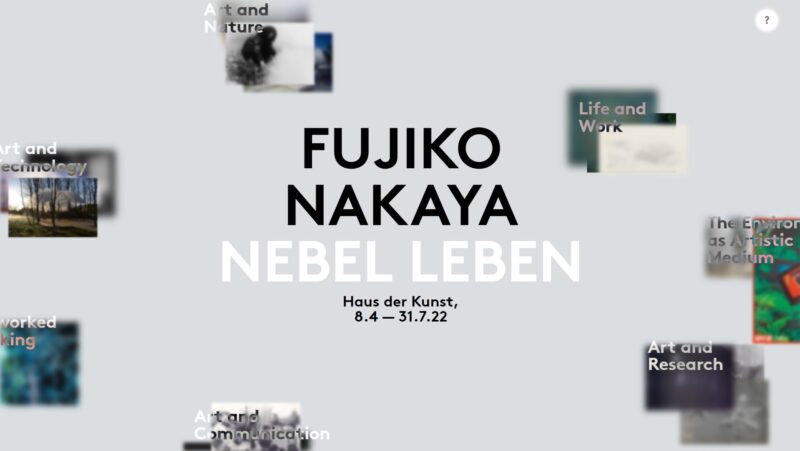
This link takes you to the digital guide to "Fujiko Nakaya. Nebel Leben".
Curated by: Andrea Lissoni, Sarah Johanna Theurer
Exhibition design: Hanna Kriegleder
Technical installation fog: Dutrie Sa
Light design: Charlotte Marr
Graphic design: Access All Areas
Restoration: Catrin Paul, Isabel Strubel
Digitization: Franz Bergmann
Video editing: Patrik Thomas
Video and sound installation: We Are Video / Magic
Exhibition architecture: Fussboden Ketterle / Schlosserei Strobel
Research assistant: Mio Harada, Eduard Weidenhammer
Image research: Camilla Langnickel
Project Assistance: Lydia Korndörfer
Thanks to: Fujiko Nakaya, Shiro Yamamoto and Sayaka Shimada (technical support, fog sculptures), Yoshiko Eguchi (Nakaya Ukichiro Foundation), Yoshinori Furukawa, Kenjiin Miwa, Yuji Morioka, Nae Morita, Hiroko Tasaka, Haden Guest (Harvard Film Archive), Anne-Marie Duguet, Paolo Ghislandi, Tobias Hauke, Emma Enderby, and the team of Haus der Kunst.
The display of scientific objects and documents by Ukichiro Nakaya has been possible thanks to the generous cooperation with the artist, Fujiko Nakaya and the Nakaya Ukichiro Foundation and, in particular: Yoshiko Eguchi (Coordination and Document Acquisition, Nakaya Ukichiro Foundation), Nae Morita (Planning and Coordination Support), Hiroko Tasaka (Communication Support), Junko Hara (Document Acquisition Assistant, Processart Inc.), Naomi Yamanaga and Noriko Koshida (Cooperation on the film Fog in Chisima and Hokkaido ) and Machiko Ishikawa, the Nakaya Ukichiro Museum of Snow and Ice and the Institute of Low Temperature Science, Hokkaido University.
To coincide with their individual exhibitions, the Munich-based institutions Lenbachhaus, Haus der Kunst, and Museum Brandhorst will collaborate on a long weekend of public programs: Technobodies focuses on the impact of new technologies on the visual and sonic arts.
